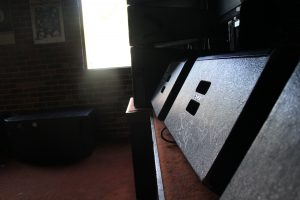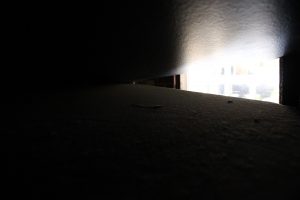Please follow this link to find the assignment posted previously on my blog.
Prior to beginning this assignment, there were no sites that immediately came to mind as places I was particularly interested in unpacking in the same way I did with my home space for the Home In The World investigation. However, meeting with Georgia and Daniel (see this post) set me on a clear and confident trajectory as we grappled with the ideas of sacredness and placeness and to which sites they might apply. We decided that these concepts are dependant on community and identity, and that often a place is gradually imbued with an aura of sacredness as it facilitates and fosters a burgeoning community.
With this connection to community established, Georgia suggested that we investigate The Tote, with its history as a hub for underground musical experimentation and live music. It was a great idea, and when we recalled the Save Live Australian Music rally of 2010 that rescued the venue from imminent closure, we realised the significance and worship that the venue receives and realised that it was the perfect opportunity.
We decided to pursue the venue in a way that separated it from how it might usually be perceived or experienced – stripping it back, with the hopes of finding evidence of community presence. To aid us in this pursuit, we devised the following three prompts:
– Place as Connection to Scene and Identity
– Emptiness/Negative Space
– People/Place/Community
Heading into the documentation I was particularly interested in the emptiness and negative space within The Tote, seeing as I’ve only ever been there when it has been filled and buzzing. I decided to visit the venue on my own before we planned to head in to re-familiarise myself with its usual energy and presence. I found this to be a useful exercise, especially when I did eventually compare the experience to our access during the day a few days later, as I became acutely aware of the myriad cultural artefacts: the imprints and messages committed to the surfaces, the stains and fraying fabrics, the shrines of posters and band worship. Each of these pointed to active community participation and cultivation within these walls, a process that I’ve been a part of but never aware of because it’s been too enjoyable in the moment.
The empty Tote gave me the opportunity to experiment with the idea of emptiness where it isn’t usually accessible. I was drawn to finding the ways that The Tote was animated and could breathe, particularly through the movements of light throughout the space. I found the immersive experience to be quite glorious and has redefined the feeling of that venue for me. These are ideas that I would be interested in pursuing further: to what extent is a place ’empty’? What is stillness? Does a place rely upon a particular community to remain accessible and alive? Does the degree of emptiness in a place have an effect on its sacredness? Is a place able to contain emptiness or is it only experienced? Does the experience of emptiness alter one’s perception of place?
I was pleased with the editing phase of this project, especially because I found Georgia and Daniel to be inspiring and cooperative collaborators. It was during this process that I discovered how crucial it is to establish a solid foundation in the pre-production/planning stage, as I feel we had done, which meant heading into The Tote could be experienced joyfully and curiously, and that curating the results was fascinating and rewarding. I am pleased that I’ve had the opportunity to work with them and will be keen to feedback into their respective further investigations.












